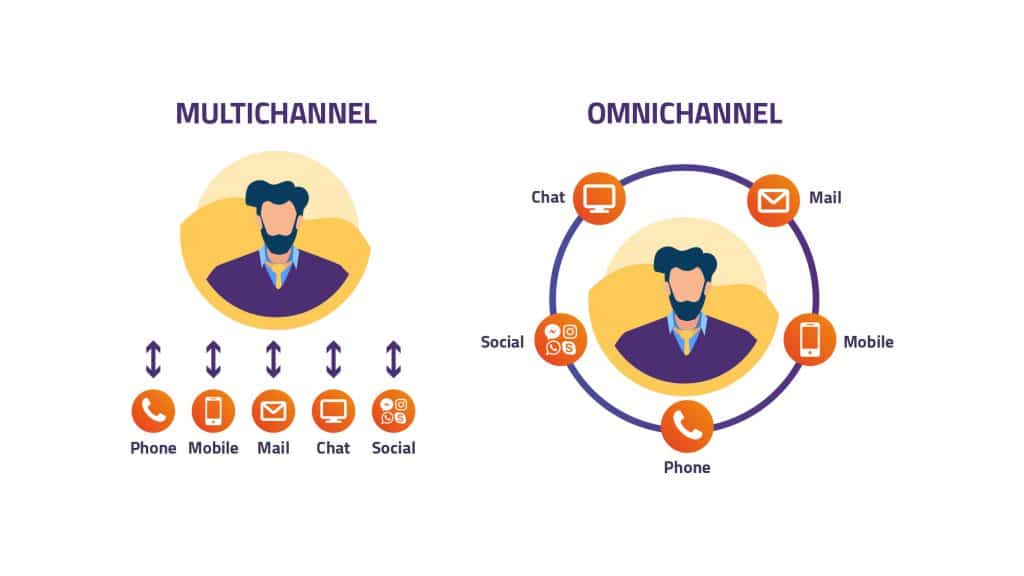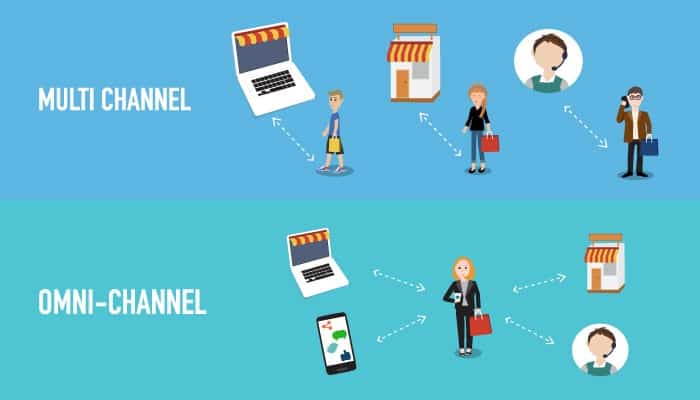
Omnichannel vs. Multichannel: What’s the difference?
Omnichannel vs Multichannel
The important aspect of understanding an omnichannel vs multichannel strategy is which one fits better for your business. Companies with omnichannel customer engagement strategies retain on average 89% of their customers.
Knowing the key difference between a multichannel vs omnichannel approach can help to gain better insights or behavioral data about your digital customers’ journey.
What does multichannel mean?
Multichannel refers to the use of more than one channel to market and communicate information about a brand. These multiple channels are not integrated with one another. A billboard, for example, is not directly connected to a business’ website – they are separate channels used to increase awareness of a brand.
What does omnichannel mean?
Omnichannel also refers to the use of more than one channel to communicate with customers. However, in this case the multiple channels are integrated to create a seamless experience for the customer. In other words, a customer can pick up on one channel where they left off on another.
How to differentiate multichannel and omnichannel
Channels vs. Customers
Omnichannel customer care is a holistic approach that connects all channels to engage with customers ensuring a seamless brand experience across every channel. It aims at developing a stronger business-customer relationship.
Whereas the multichannel approach aims at enabling customers to reach the brand via a maximum number of digital channels. It adopts two or more channels to engage customers and the most popular are social media & email.
Uniformity vs. Engagement
The omnichannel strategy ensures that customers are satisfied with getting the unified messaging experience through every channel. Having a consistent brand experience enhances engagement and relationship with the brand.
Being omnichannel needs to make sure that all the internal departments are in tune with your brand messaging. It helps to deliver a cohesive engagement across all channels to make the marketing strategy successful.
However, in the multichannel strategy, customer engagement siloed.
Hyper Personalization
The omnichannel marketing strategy collects and analyzes customers’ data to understand their pain points, which requires more effort to deliver a hyper-personalized experience.
While the multichannel approach conveys the brand message and motivates customers to use the call to action (CTA). With an omnichannel strategy, you put extra effort into understanding customer journeys better to serve with personalized solutions.
Effort vs. Unified
Omnichannel marketing aims at fostering an effortless support or buying experience for consumers. It uses analytics to obtain insights to engage customers easily. With a multichannel strategy, it doesn’t happen.
The significant difference between multichannel vs omnichannel is that the latter connects the touchpoints together so that, whatever journey the customer chooses to take, the experience is consistent and unified.
What’s the best approach?
Customer experience is incredibly valuable to any business or organisation and therefore should always be a focus. With this in mind, an omnichannel approach is better than a simple multichannel approach.
This does not mean that you shouldn’t expand the number of channels through which you communicate with your customers. After all, a business should always be where their customers are and offering preferred contact channels is a good way to stand out from the competition.
An omnichannel approach is still a multichannel approach, as it offers customers more than one contact and marketing channel. The difference is in treating all these channels as part of a whole, rather than each one separately.


